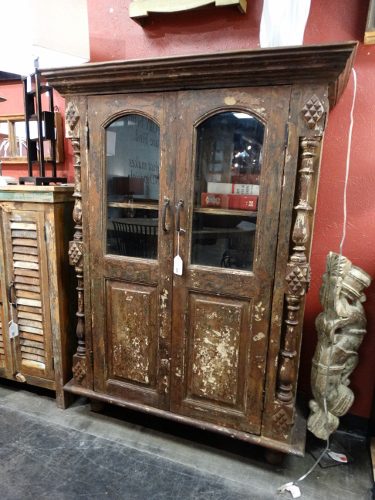
Whether you’re a seasoned collector or a new admirer of vintage charm, understanding how to clean antique furniture is essential for preserving its beauty and integrity. At Rare Finds, we treasure the history and stories that come with each piece, and we’re excited to share with you some expert tips and tricks to keep your antiques looking their best.
Understanding Your Antique Furniture
Before we jump into the cleaning process, it’s crucial to understand what makes antique furniture so special. Antique furniture is not just old furniture; it’s a piece of history, crafted with techniques and materials that may no longer be in use. This uniqueness demands a special approach to cleaning and maintenance.
Firstly, assess the condition and material of your furniture. Wood, metal, glass, and upholstery each require different care. Pay attention to any loose joints, chipping paint, or fragile areas, as these will influence how you clean and handle the piece. Remember, the goal is to preserve, not to refurbish or alter its original state.
Preparing to Clean
Before you start, gather all the necessary supplies. You’ll need gentle, non-abrasive cleaners, soft cloths, and perhaps a small, soft-bristled brush for intricate details. Avoid any harsh chemicals or abrasive tools that could damage the furniture’s finish or material. It’s also wise to test any cleaner on a small, inconspicuous area before applying it to the entire piece.
Preparation also involves removing any removable parts, like drawers or shelves, which can be cleaned separately. This step ensures that you won’t miss any nooks and crannies where dust and grime might hide. Plus, it makes the entire cleaning process much easier and more thorough.
The Cleaning Process
Dusting and Vacuuming
The first step in how to clean antique furniture is dusting. Use a soft, lint-free cloth to gently wipe the surface. For carved or intricate details, a soft-bristled brush or even a vacuum with a brush attachment set to low suction can help remove dust without causing damage. Always dust in the direction of the grain to avoid scratching the wood.
Washing
For a deeper clean, a mild, soapy solution can be used on most wood furniture. Mix a small amount of gentle dish soap with water, dampen a soft cloth in the mixture, and wring it out thoroughly to avoid saturating the wood. Gently wipe the surfaces, being careful not to let any water pool. Follow up with a clean, damp cloth to remove any soap residue, and then immediately dry with a soft, dry cloth.
Dealing with Stains and Odors
Stains and odors can be particularly challenging. For water rings, applying a small amount of non-gel toothpaste mixed with baking soda can work wonders. Rub gently, then wipe clean. For odors, placing a bowl of baking soda or activated charcoal inside drawers can help absorb unpleasant smells. Remember, patience is key; some treatments may need to be repeated for the best results.
Protecting and Polishing
Once your antique furniture is clean, you’ll want to protect and enhance its beauty. Use a good-quality furniture wax to give it a protective coating. Apply the wax with a soft cloth, wait for it to dry to a haze, and then buff it to a shine with a clean, soft cloth. This not only adds a beautiful luster but also provides a barrier against dust and moisture.
Avoid silicone-based polishes and cleaners, as they can build up over time and detract from the furniture’s natural beauty. Natural waxes, like beeswax, are preferable for antique furniture as they nourish the wood and provide a durable finish.
Regular Care and Maintenance
Maintaining the cleanliness and integrity of your antique furniture is an ongoing process. Regular dusting, careful handling, and avoiding exposure to extreme temperatures and direct sunlight can prevent damage. Always lift furniture rather than dragging it to avoid stress on the joints, and use coasters under glasses and vases to prevent water marks.
Inspect your antiques regularly for signs of wear or damage. Early detection can make all the difference in preserving these pieces for future generations. Remember, caring for antique furniture is not just about maintaining its appearance but also about preserving its history and value.
Discover Antique Furniture for Your Home in Colorado
Learning how to clean antique furniture is a rewarding journey that enhances your connection to the past. Each piece has its story and character, and with the right care, you can ensure it continues to be told for years to come.
At Rare Finds Warehouse, our handpicked collection is sourced from the world’s most intriguing nooks. With our antique furniture, we guarantee you won’t find our items in your neighbor’s living room or that mundane big-box store down the street.
Visit us now at one of our prime locations in Denver or Highlands Ranch or deep dive into our antique collection before someone else claims your prize.

